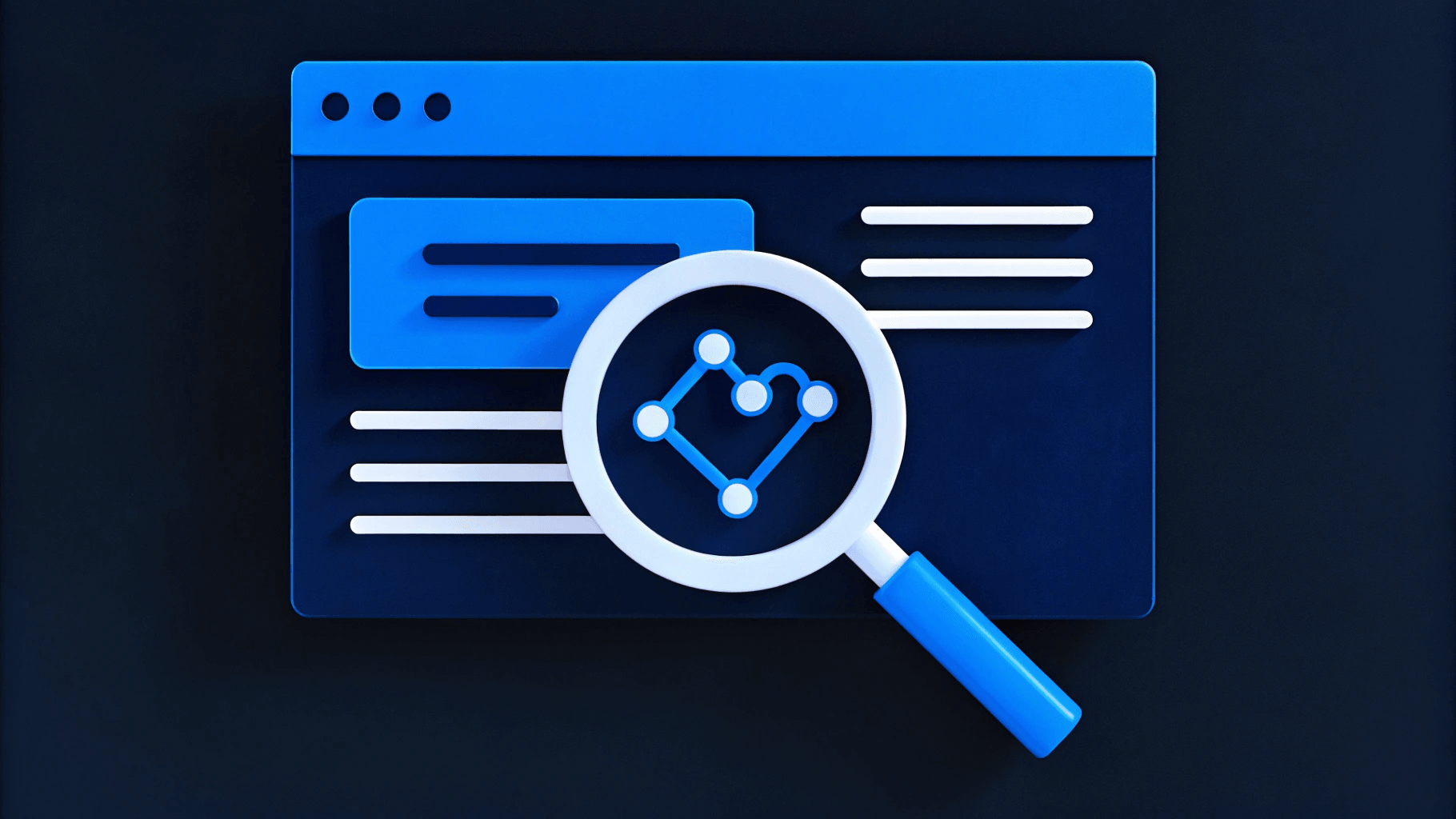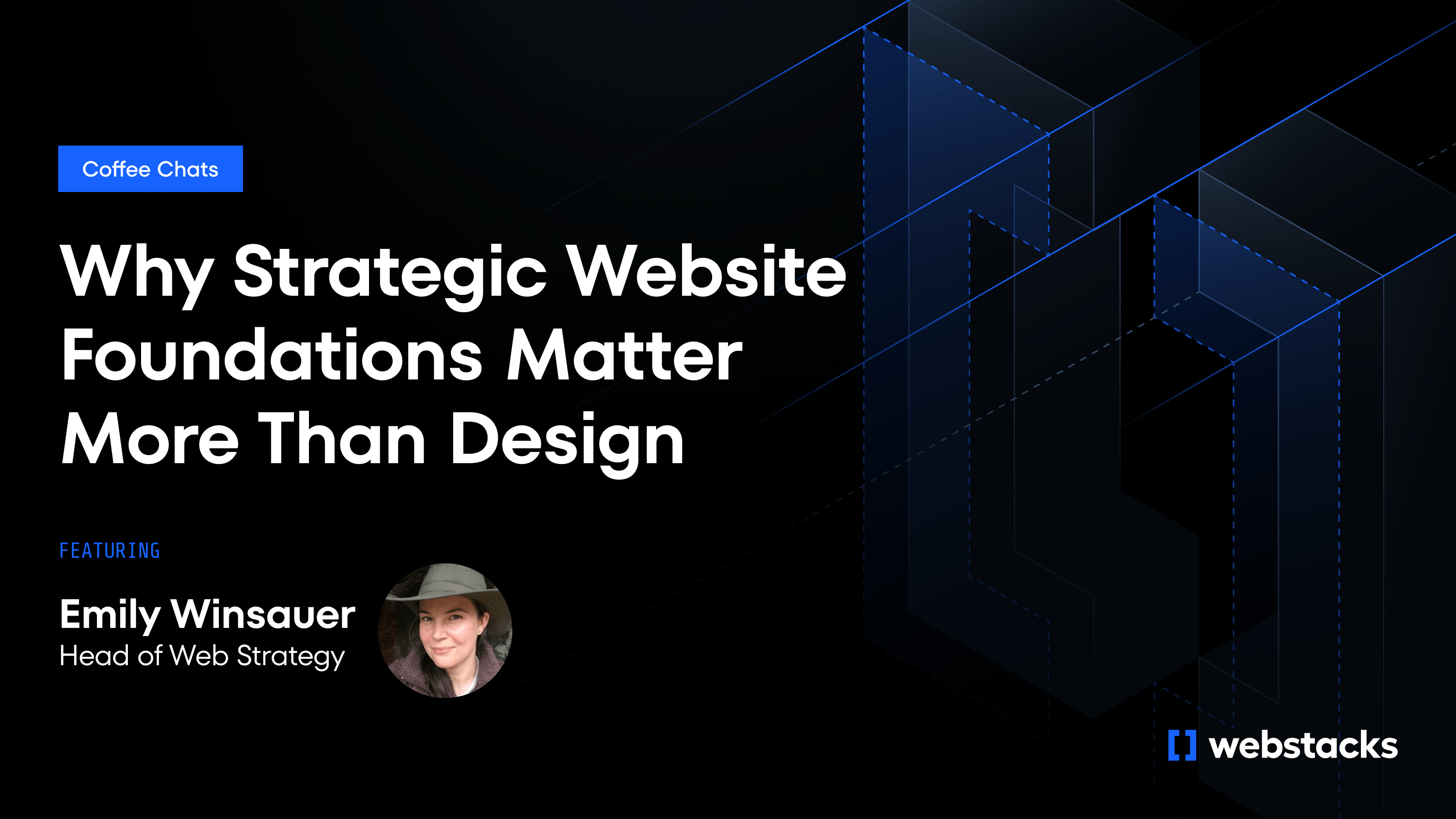Generative AI can now create page components, connect APIs, and prepare deployments faster than human teams can click through a visual editor. But page-centric builders like Webflow and Builder.io were built for manual use, not autonomous agents.
When AI needs to localize a campaign overnight or update thousands of product specs, visual interfaces stall, rate limits kick in, and manual work returns. In contrast, API-first platforms like Sanity store content in structured fields with real-time endpoints and webhook triggers, allowing AI to update, publish, and distribute changes across channels instantly.
The takeaway: structured, API-ready content is the foundation of an AI-driven web stack. Teams managing performance, releases, or personalization need composable platforms (modular systems where components can be mixed and matched) that treat content as data — built for both human editors and machine-driven publishing at market speed.

The WYSIWYG Problem in an AI-Driven World
Visual builders couple markup, styling, and content into single components. While this works for drag-and-drop editing, it blocks the programmatic access AI relies on.
When key elements are locked in a proprietary DOM, AI cannot call an API to update CTAs, product specs, or layouts at scale. Instead, it must simulate clicks in the interface, which is slow, brittle, and error-prone.
Platforms like Webflow and Builder.io limit code export and API scope, making it difficult to integrate with CI/CD pipelines, enforce governance, or run schema-based updates. Flat content structures and rate-limited APIs slow bulk edits. Even small layout changes often require exporting, refactoring, and reintegrating code because the underlying model is built for visual editing rather than modular, machine-readable HTML or components.
When AI tools try to automate iteration, these limits surface immediately. Models may generate production-ready components, but locked visual canvases prevent direct publishing. Workarounds for dynamic updates add friction that structured, API-first systems avoid entirely.
Why AI-First Architecture Wins
The shift from visual-first tools to AI-ready infrastructure delivers three fundamental advantages that compound across every workflow. These benefits become more pronounced as teams scale their content operations and automation needs. Each advantage builds on the others, creating exponential improvements in publishing speed and operational efficiency:
Speed Gains From Programmatic Access
Direct API calls eliminate the need to navigate visual interfaces. A pricing update that takes 20 minutes through a visual builder completes in under 30 seconds via API. At Shopify, automated product imports that once required 8-hour overnight processes are now completed during lunch breaks.
Scale Advantages Over Manual Processes
Visual builders break down when handling hundreds or thousands of updates simultaneously. API-first systems handle bulk operations natively. HubSpot's migration from a visual CMS to structured content reduced its campaign setup time from 3 days to 45 minutes for multi-variant testing across 12 markets.
Automation Potential With Structured Data
When content exists as addressable fields rather than embedded HTML, AI can target specific elements without affecting surrounding code. This precision enables continuous optimization, real-time personalization, and hands-off publishing that visual builders simply cannot match.
The Structured Content Foundation
The solution isn't just avoiding visual builders—it's fundamentally restructuring how content is stored and accessed. Structured content turns every headline, image, specification, and price into its own labeled field with defined relationships, creating a foundation that AI can work with directly.
Schema-driven architecture (predefined content templates with specific field types) lets teams model products, regions, or campaigns as unique content types rather than generic "page" templates. An AI agent updating prices can target only the price field, eliminating the risk of accidental design changes. Unlike HTML-heavy page templates, this approach stores content as addressable data that AI can work with surgically.
Operational Efficiency At Scale
A single update, such as changing SKU dimensions, can propagate to the website, mobile app, and partner feeds in one API call. Sephora's product team reduced its cross-channel update time from 2 hours to 5 minutes by switching to structured content that feeds their website, mobile app, and in-store kiosks simultaneously.
Native Personalization
AI can assemble dynamic experiences by filtering content fragments for each user's context, such as delivering localized imagery for specific regions, without relying on front-end scripting workarounds. Netflix's content management system uses this approach to generate thousands of personalized homepage variants without designer intervention.
Governance and Compliance
Typed, versioned fields make it possible to trigger reviews only for modified elements. Audit trails, role-based permissions, and schema validation keep AI-generated updates consistent and controlled—capabilities rarely found in visual builders. Financial services firm Stripe uses structured content to ensure regulatory compliance while allowing AI to optimize conversion copy.

How APIs Unlock Automation
But structured content is only as powerful as your ability to access it programmatically. API-first CMS platforms store content in databases accessible through REST or GraphQL, making it easy for both humans and AI to read, update, and publish without opening a visual editor.
Direct Programmatic Control
CRUD operations (create, read, update, delete) allow scripts and AI agents to fetch documents, change fields, and publish instantly. This avoids the need to navigate nested divs or work inside a design canvas. Airbnb's listing updates happen through API calls that modify only the changed fields, preserving all other content and formatting.
Scalability for Automation
Visual builders often have rate limits, partial API coverage, and manual workarounds for bulk operations. Updating CTAs across hundreds of pages or generating localized variants can trigger throttling or require designer involvement. In contrast, API-first platforms handle concurrent requests efficiently.
Built-In Extensibility
API-first systems support webhooks that integrate directly with automation tools. For example, a webhook can alert a Slack channel when a product status changes, using structured payloads that remove the need for extra parsing logic. Notion's API powers thousands of automated workflows that would be impossible with a visual-only interface.
Proven Operational Gains
When Webstacks migrated Justworks from WordPress to Contentful, the new API-first architecture unlocked automations that weren’t possible before. Marketing teams could publish and update pages directly from structured fields, while engineering connected the CMS to internal tools through Contentful’s GraphQL API. Routine updates that once required developer intervention—like swapping CTAs, adjusting navigation, or localizing content—became instant, automated actions. The result was a faster publishing cadence, fewer handoffs, and more time for both teams to focus on higher-value projects instead of repetitive content tasks.
What to Look for in an AI-Ready CMS
An AI-ready CMS stores content so AI can access, update, and distribute it without manual intervention. The starting point is structured content. Platforms with custom schemas let you define fields explicitly so AI can update a single element, such as a product description, without changing unrelated data like pricing or compliance text. Flat, page-level builders cannot offer this precision.
An open, well-documented API is equally important. Headless systems with GraphQL or REST endpoints allow AI services to authenticate, query, and modify content directly. Limited APIs restrict automation and create unnecessary workarounds. When evaluating platforms, confirm they provide:
- Structured content architecture with user-defined schemas
- Robust REST or GraphQL API with clear documentation
- Webhooks or serverless hooks to trigger AI workflows
- Composable integrations for authentication, analytics, and data pipelines
- Role-based governance with version history and audit trails
Without these capabilities, automation breaks down. Some visual builders offer AI copywriting tools, but the generated text is stored in proprietary HTML, making it unusable in chatbots, mobile apps, or email campaigns without manual extraction.
Finally, request a live demonstration of automation. A capable CMS should generate localized pages, trigger webhooks, and publish after approval in minutes without relying on third-party plugins.
Preparing Your Team for the Post-WYSIWYG Era
The shift to AI-driven publishing changes daily workflows and team structures. Visual editors trained teams to design and edit pages. AI-ready stacks require strategic thinking about data modeling, API usage, and automation governance.
Instead of platform-specific expertise, successful teams prioritize:
- Schema design skills to create scalable content models without rework
- API literacy to launch campaigns through endpoints rather than manual processes
- Data governance experience to prevent AI from publishing incomplete or unapproved content
Key roles that bridge content operations and automation include Content Architects who define content types and relationships, and AI-Ops specialists who monitor automated output and maintain quality standards.
Daily workflows evolve from moving pixels to shaping data structures. Design tokens (reusable style definitions) replace one-off visual overrides and travel with content across channels. Real-time collaborative editing allows copy, design, and development work to happen in parallel, reducing release cycles.
The governance shift is equally important. Teams must stage content for review before running AI promotion scripts and maintain human oversight for legal and brand-sensitive assets, using automated summaries to support review rather than replace it.
Building AI-Driven Web Infrastructure with Webstacks
The transition from visual builders to AI-first architecture is a competitive necessity. Companies that continue relying on proprietary, click-driven interfaces will find themselves outpaced by teams that can ship, iterate, and personalize at software speed.
This shift requires more than choosing the right tools; it demands a fundamental rethinking of how content flows through your organization. Webstacks specializes in this transformation, replacing visual builder bottlenecks with API-first, composable foundations using platforms like Sanity or Contentful, paired with Next.js and Vercel. This stack gives AI direct access to a single source of truth while preserving full creative control in React.
The window for this transition is narrowing as AI capabilities accelerate and market expectations shift. Talk with our experts about your post-WYSIWYG web infrastructure and build a web stack designed for AI speed, scale, and personalization.




